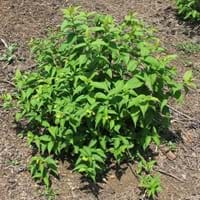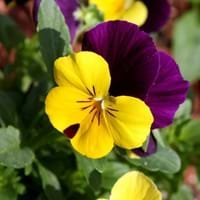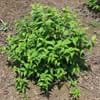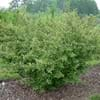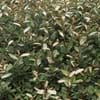Life Span
Annual and Perennial
Annual
Type
Shrub
Flowering Plants
Origin
North America, United States, Northeastern United States, Mid-Atlantic United States, Southeastern United States, North-Central United States, Canada
Asia, Europe
Types
Diervilla sessilifolia, Diervilla rivularis
Blue & Purple Rain viola, Bowles' Black pansy, Fizzy Lemonberry pansy, Karma Yellow pansy
Number of Varieties
Not Available
Habitat
Forests, Prairies, Roadsides, Wet lands, Woodlands
Fields, gardens, meadows, rocky outcrops, wastelands
USDA Hardiness Zone
3-7
4-8
Sunset Zone
A2, A3, 1a, 1b, 2a, 2b, 3a, 3b, 4, 5, 6, 7, 8, 9
A1, A2, A3, H1, H2, 1a, 1b, 2a, 2b, 3a, 3b, 4, 5, 6, 7, 8, 9, 10, 11, 12, 13, 14, 15, 16, 17, 18, 19, 20, 21, 22, 23, 24
Habit
Cushion/Mound-forming
Cushion/Mound-forming
Flower Color
Yellow, Orange, Light Yellow, Yellow green
Blue, Orange, Pink, Red, White
Flower Color Modifier
Not Available
Bicolor
Fruit Color
Red
Not Available
Leaf Color in Spring
Light Green, Bronze
Green
Leaf Color in Summer
Dark Green, Bronze
Green
Leaf Color in Fall
Yellow, Red, Bronze
Green
Leaf Color in Winter
Not Available
Green
Plant Season
Spring, Summer, Fall, Winter
Fall, Spring, Summer, Winter
Sunlight
Partial Sun, Partial shade
Full Sun
Type of Soil
Clay, Loam, Sand
Rich, Well drained
The pH of Soil
Acidic, Neutral, Alkaline
Acidic
Soil Drainage
Well drained
Well drained
Bloom Time
Summer
Fall, Spring
Tolerances
Drought
Not Available
Where to Plant?
Ground, Pot
Container, Ground, Pot
How to Plant?
Cuttings
Seedlings
Plant Maintenance
Medium
Medium
Watering Requirements
Average Water Needs, Medium
It cannot sustain wet-feet, Keep the ground moist but not water-logged, Requires regular watering, Use and maintain water-efficient soaker hoses
In Summer
Lots of watering
Lots of watering
In Spring
Moderate
Moderate
In Winter
Average Water
Average Water
Soil pH
Acidic, Neutral, Alkaline
Acidic
Soil Type
Clay, Loam, Sand
Rich, Well drained
Soil Drainage Capacity
Well drained
Well drained
Sun Exposure
Partial Sun, Partial shade
Full Sun
Pruning
Prune in early spring, Remove damaged leaves, Remove dead branches, Remove dead leaves, Remove dead or diseased plant parts, Remove shoots
Cut or pinch the stems, Prune after flowering, Prune for shortening long shoots, Remove deadheads
Fertilizers
10-10-10
All-Purpose Liquid Fertilizer
Pests and Diseases
Red blotch
Aphids, Crown rot, Downy mildew, Gray mold, Mosaic viruses, Powdery mildew, Root rot, Slugs, Snails, Spot anthracnose
Plant Tolerance
Drought
Drought
Flower Petal Number
Single
Single
Foliage Texture
Medium
Medium
Foliage Sheen
Matte
Matte
Attracts
Birds, Butterflies, Hummingbirds, Not Available
Not Available
Allergy
Avoid during Pregnancy, Poisonous, Toxic
Not Available
Aesthetic Uses
Showy Purposes
Beautification, Bouquets, Showy Purposes
Beauty Benefits
Good for skin
Not Available
Edible Uses
Insignificant
Yes
Environmental Uses
Air purification, soil stabilisation
Air purification
Medicinal Uses
Diuretic, Galactogogue, Laxative, Opthalmic
Asthma, epilepsy, Heart problems
Part of Plant Used
Bark, Leaves
Flowers, Leaves
Other Uses
Used for its medicinal properties
Not Available
Used As Indoor Plant
Yes
Yes
Used As Outdoor Plant
Yes
Yes
Garden Design
Container, Foundation, Groundcover, Mixed Border, Rock Garden, Wall
Bedding Plant, Feature Plant, Foundation
Botanical Name
DIERVILLA lonicera
Viola tricolor var. hortensis
Common Name
Northern bush honeysuckle, Low bush honeysuckle, Dwarf bush honeysuckle, Yellow-flowered upright honeysuckle
Pansy
In Hindi
Bush Honeysuckle
Plant
स्रीवत
In German
Bush Honeysuckle
Pflanze
Stiefmütterchen
In French
Bush Honeysuckle
Plante
Pensée
In Spanish
Bush madreselva
Planta
Pensamiento
In Greek
Μπους Αγιόκλημα
Φυτό
πανσές
In Portuguese
Bush, Honeysuckle
Plantar
amor-perfeito
In Polish
Bush Honeysuckle
Roślina
Bratek
In Latin
CISSANTHEMOS Bush
planta
Cinaede fill
Phylum
Magnoliophyta
Anthophyta
Class
Magnoliopsida
Magnoliopsida
Order
Dipsacales
Malpighiales
Family
Caprifoliaceae
Violaceae
Clade
Angiosperms, Asterids, Eudicots
Not Available
Tribe
Diervilleae
Not Available
Subfamily
Not Available
Not Available
Number of Species
Not Available
Not Available
Importance of Bush Honeysuckle and Pansy
Want to have the most appropriate plant for your garden? You might want to know the importance of Bush Honeysuckle and Pansy. Basically, these two plants vary in many aspects. Compare Bush Honeysuckle and Pansy as they differ in many characteristics such as their life, care, benefits, facts, etc. Every gardener must at least have the slightest clue about the plants he wants to plant in his garden. Compare their benefits, which differ in many ways like facts and uses. The medicinal use of Bush Honeysuckle is Diuretic, Galactogogue, Laxative and Opthalmic whereas of Pansy is Asthma, epilepsy and Heart problems. Bush Honeysuckle has beauty benefits as follows: Good for skin while Pansy has beauty benefits as follows: Good for skin.
Compare Facts of Bush Honeysuckle vs Pansy
How to choose the best garden plant for your garden depending upon its facts? Here garden plant comparison will help you to solve this query. Compare the facts of Bush Honeysuckle vs Pansy and know which one to choose. As garden plants have benefits and other uses, allergy is also a major drawback of plants for some people. Allergic reactions of Bush Honeysuckle are Avoid during Pregnancy, Poisonous and Toxic whereas of Pansy have Not Available respectively. Having a fruit bearing plant in your garden can be a plus point of your garden. Bush Honeysuckle has no showy fruits and Pansy has no showy fruits. Also Bush Honeysuckle is flowering and Pansy is flowering. You can compare Bush Honeysuckle and Pansy facts and facts of other plants too.
